
views
Assessing Your Dog's Health

Assess your dog's bodily condition. You may want to consider euthanizing a dog that is withering away and is losing its ability to move. Loss of mobility and excessive weight loss are signs that your dog's body is shutting down. As your dog loses weight and loses the ability to move, its quality of life also suffers. Discuss the reasons for weight loss with your veterinarian. If there is a treatment that can reverse the weight loss and improve the dog's quality of life, then it is a good idea to try it. However, if the weight loss is due to a condition that cannot be treated, then this may point you towards euthanasia. Mobility issues in dogs can be caused by a wide variety of issues. If you know what is causing the issues then you should try to treat them. If you have tried to improve your dog's mobility to no avail, then euthanasia may be the compassionate route to take.
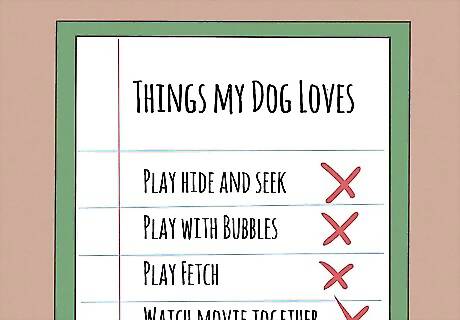
Consider your dog's happiness and quality of life. If your dog is suffering and is no longer doing any of the activities that it loves, then it may be time to consider euthanasia. This unhappiness may be due to acute issues or pain, or simply an aging body that no longer allows the dog to move in ways it used to. Take the dog's happiness in to consideration when determining whether you should euthanize. If you are having a hard time assessing whether your dog is happy or not, try making a list of the things it has loved to do over the course of its life. If it is no longer able to do any of these things, then it may be time to consider euthanasia.
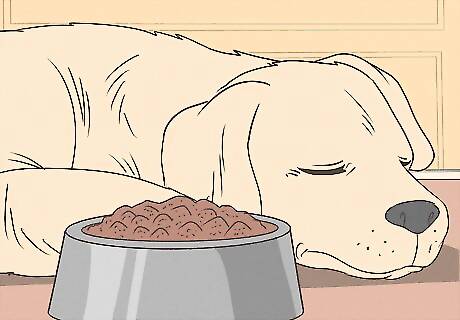
Consider your dog's ability to eat and drink. If your dog is no longer eating or drinking it likely means that its body systems are shutting down. You can supplement the food and water with i.v.'s or injections, for example, but not eating and drinking in many cases is a sign that your dog's overall system is shutting down. Clearly, you should be discussing your dog's inability to eat or drink with its veterinarian. If the dog can have reasonable treatment that will help it to eat and drink again then you should try that. If not, it may be time to put you dog to sleep.
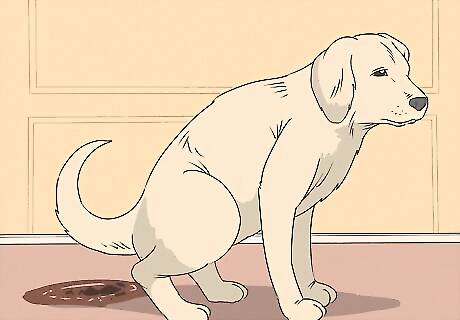
Assess whether your dog can control its bodily functions. Dogs that are very ill often have trouble caring for themselves in the most basic ways. This includes controlling their bodily functions. In otherwise healthy dogs, this is not necessarily a reason to put your dog down. However, if this lack of control is in combination with other symptoms of declining health, then choosing euthanasia may be your best choice. An accident in the house once in awhile is not the issue. Instead, if your dog no longer even tries to get outside to go to the bathroom or looks caught off guard when going to the bathroom, then it no longer has control of its bodily functions. If your dog no longer has bladder or bowel control that is a sign that its body functions are shutting down.

Assess whether your dog is in pain. If your dog is in pain and is suffering it is the compassionate thing to do to eliminate that pain. In the best cases, this can be done with medication and veterinary care. However, if all methods of veterinary care afforded to you have been utilized and your dog is still in pain, then euthanasia is the best recourse. Assessing whether your dog is in pain can be difficult. Is it trembling or shaking a lot? Does it react poorly to your touch? Does it whimper or whine? Does it seem uncomfortable or agitated?These can all be signs that your dog is in pain. If a dog is constantly on pain medications that limit its ability to enjoy its life, then this may also be a good sign that you should consider euthanasia. It may be more humane to eliminate the dog's suffering than to keep it in drug-induced limbo.

Consider behavioral issues. Making the decision to euthanize your dog is difficult enough when the dog is terminally ill but it can be even more difficult if you are considering euthanasia due to behavioral issues. If you are considering putting down a dog due to aggression or other behavioral issues you should do some specific steps to give your dog every chance at life before making the decision. If you do these things and you still come to the realization that you need to put the dog down, then at least you will know that you have done everything you could. A certified dog behaviorist can help you determine whether your dog's issues can be trained out of it. They can recommend treatment or training to help. Make sure there are no medical causes for the behavior. If your dog is acting out it could be due to illness. Have it assessed by a veterinarian to rule out a medical condition that could be cured. Get professional dog training. Seek out a professional that is experienced dealing with dogs that have the behavioral problems that your dog has. Try to rehome the dog. If you find that you cannot deal with the dog's behavior you should try to find it a new home with an experienced dog owner who is willing to work with its specific behavioral issues.
Making the Decision

Discuss euthanasia with your veterinarian. Veterinarians are taught to consider the quality of life of their patients when considering euthanasia. This means that they should present to you all treatment options that they think could help your pet before suggesting euthanasia. Ask your veterinarian any questions you have, such as what the process will entail and what makes them sure that euthanasia is the right choice. If the veterinarian does not believe that there is a reasonable treatment that could help the pet then they will suggest euthanasia as a compassionate and caring option. Ask questions such as "Will I be allowed in the room with Rufus?" "Will he feel pain?" "How long will the process take?" A good vet will take the time to explain the process to you.

Give yourself time. Take time to consider your options. Deciding to euthanize your dog is a very difficult decision that requires some contemplation. Think about your dog, whether they are in pain, and whether they have any quality of life left. Use these questions to think and debate your options. In some cases you will not have very much time to debate your options. If your dog is in an emergency situation you may be required to make the decision quickly.

Talk to your family and friends. Discuss the situation with those closest to you. Ask them if they have any experience with euthanasia and how they dealt with it. They can help console you and, in some cases, they can help you to make the hard decision to euthanize your dog. Small children in your family should be told that the pet will be gone soon. How you do this is up to you but it should take the children's feelings about the pet into consideration. You can try saying, "Sam hasn't been feeling well for a while. We don't want him to be in pain, so the vet is going to give him medicine that will ease his pain. Sam will die, but that is what is best for him."
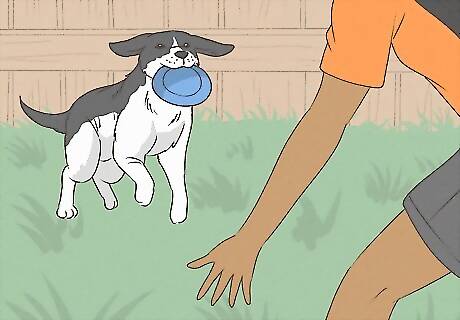
Spend quality time with your dog. After you have decided to euthanize your dog you should spend some quality time with it. Take it to its favorite places or do activities that it loves if you can. This is a time to make some wonderful memories with your pet before you have to say goodbye to it. Quality time with a pet that is ill could just mean quiet times together. Pet your dog softly and keep it nice and warm. Feed it food it loves and pamper it in any way that you can.
Euthanizing Your Dog

Make an appointment. Most people who are having to euthanize their dogs due to old age or chronic illness make an appointment to do it. This allows them to have some last quality time to spend with their pet before the procedure and for their families to give the pet a proper send off. This will also allow you to have more time to think about your choice and whether it is the best decision for your pet. In some cases, if your dog is brought in to a veterinary office with acute emergency symptoms, you will not be able to make the decision to euthanize and then come back to do it. In cases where your dog is in severe pain and distress and you have brought it in to a veterinary office for care, it may be best to euthanize the dog quickly to avoid extending its pain and suffering.
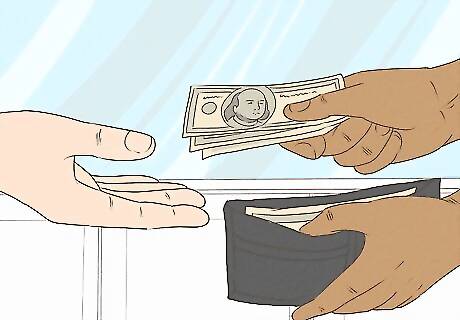
Deal with logistical decisions and payment ahead of time. While many veterinary procedures are paid for afterwards, in the case of euthanasia, it's best to get the business out of the way ahead of time so that you can focus on grieving afterwards. This includes deciding how your pets body will be dealt with after it is euthanized and paying for euthanasia and cremation, if chosen. Euthanasia is usually a reasonably priced procedure. If you cannot pay for the procedure, however, discuss your financial issues with the veterinary office and they may allow you to pay over time or they may refer you elsewhere for the procedure.
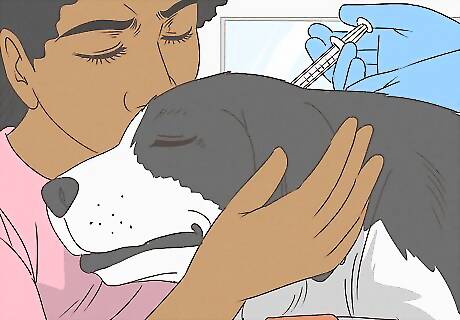
Decide if you would like to be with your pet. In most cases, your veterinarian will ask you whether you would like to be with your pet while it is euthanized. This is a purely personal choice that depends on a lot of factors, such as whether you are emotionally sound enough to support your dog during the procedure. Before you make a decision, discuss how the procedure will proceed with the veterinarian. In most cases euthanasia is done with an injection of a barbiturate anesthetic that puts the animal to sleep peacefully and then stops its heart. Occasionally, the vet will give an anxious or nervous dog an anti-anxiety medication to help soothe them. If you do decide to be present, spend the time loving on your dog. Pet it and care for it as it goes through the transition of death.



















Comments
0 comment